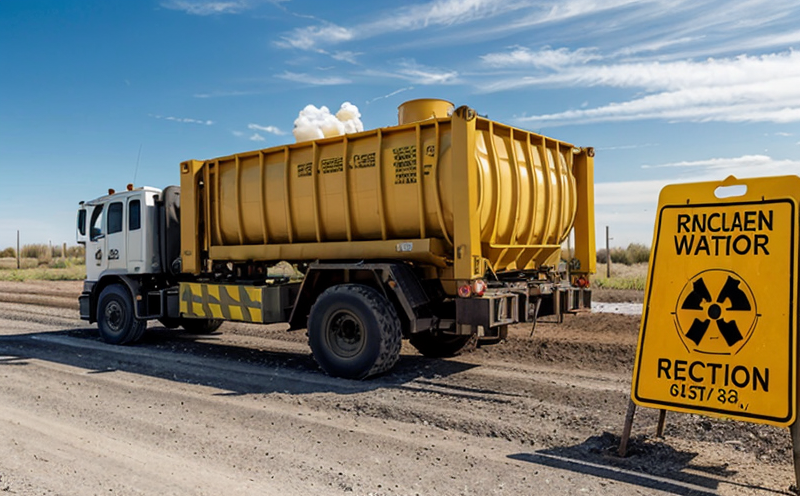EN 12588 Radiological Monitoring of Nuclear Waste Storage Sites
The EN 12588 standard provides a comprehensive framework for radiological monitoring at nuclear waste storage sites. This critical service ensures that radioactive materials are contained within acceptable limits and does not pose a threat to the environment or public health.
Developed by European Committee for Standardization (CEN), EN 12588 is widely recognized across Europe, ensuring harmonized approaches in nuclear safety and environmental protection. It mandates continuous monitoring of waste storage sites through various techniques such as gamma spectrometry and neutron measurements to detect any potential leaks or breaches.
The testing process involves several key steps: initial site survey, installation of monitoring equipment, regular sampling, and analysis. The first step is conducting a thorough site assessment using remote sensing technologies like gamma cameras to identify areas with higher radiation levels. This information helps in placing the necessary monitoring devices accurately.
Once installed, these devices continuously measure emissions from various angles around the storage facility. Gamma spectrometry allows for precise identification of specific isotopes present in radioactive waste while neutron measurements help determine overall activity levels. These data points are then collated into detailed reports which form part of the ongoing compliance documentation.
Regular maintenance checks ensure that all monitoring systems remain operational and accurate over time. This includes periodic calibration exercises, replacement of worn-out parts, and updating firmware where necessary. By adhering strictly to this schedule, laboratories can maintain high standards of accuracy and reliability throughout their operations.
The importance of EN 12588 cannot be overstated given the serious consequences associated with even minor breaches in nuclear waste containment systems. It plays a crucial role in safeguarding both human health and ecosystems from radiation exposure risks. Proper implementation ensures that facilities meet strict regulatory requirements set forth by international bodies such as the International Atomic Energy Agency (IAEA).
Non-compliance can result in severe penalties including fines, shutdown orders, or revocation of operating licenses. Therefore, it is essential for facility operators to stay abreast of changes in standards and best practices related to radiological monitoring.
Benefits
Implementing EN 12588 provides numerous advantages beyond just meeting regulatory obligations. Regularly scheduled inspections help identify potential issues early on, allowing for timely interventions before they escalate into larger problems. This proactive approach not only enhances operational efficiency but also reduces long-term costs associated with remediation efforts.
Furthermore, compliance with this standard demonstrates a commitment to responsible stewardship of radioactive materials. It fosters trust among stakeholders including local communities and regulatory authorities alike. Such transparency can significantly improve relationships between facilities and their surrounding environments fostering goodwill and support for continued operations.
Why Choose This Test
Selecting EN 12588 as your preferred radiological monitoring solution offers several compelling reasons. Firstly, it is a globally recognized standard that commands respect among regulators and industry stakeholders alike. Secondly, the detailed procedures outlined in this document provide clear guidance on how to conduct effective tests ensuring consistent results across different locations.
Thirdly, the use of advanced technology like gamma cameras enables precise identification of problem areas within waste storage sites. This allows for targeted interventions rather than blanket solutions which can be more cost-effective and environmentally friendly in the long run.
International Acceptance and Recognition
The EN 12588 standard enjoys widespread acceptance across Europe and beyond. Many countries have adopted similar standards or incorporated elements of it into their national regulations. This global recognition enhances the credibility of facilities implementing this protocol, making them attractive partners for international collaborations.
Moreover, compliance with such internationally accepted protocols often simplifies the process of obtaining necessary permits and approvals from various governmental bodies involved in environmental protection and nuclear safety matters.





